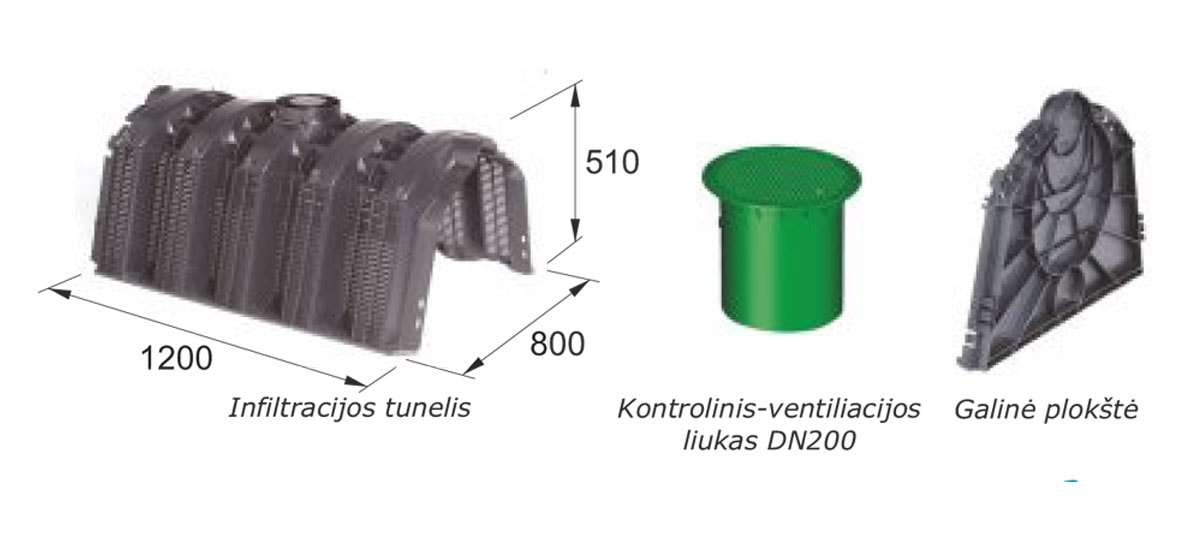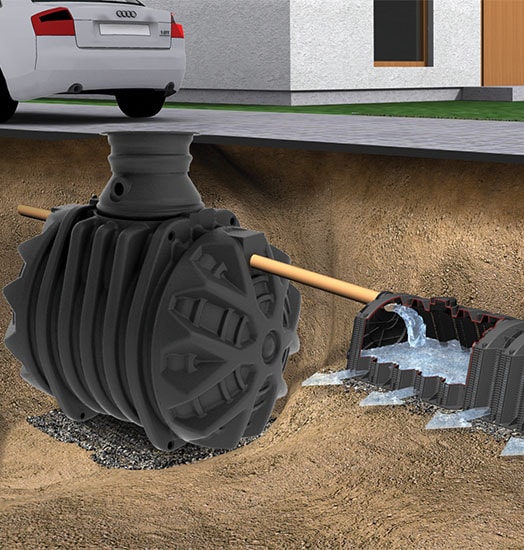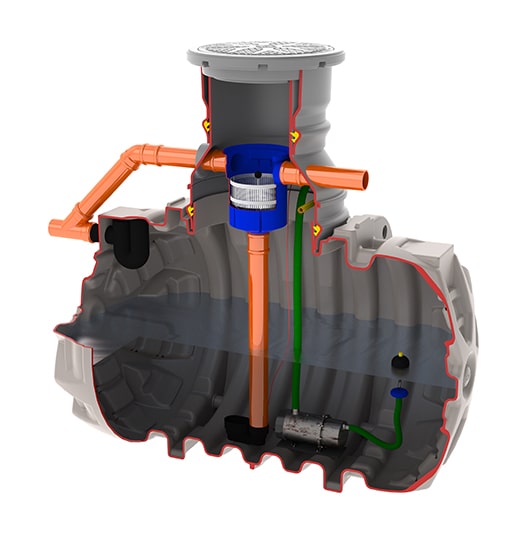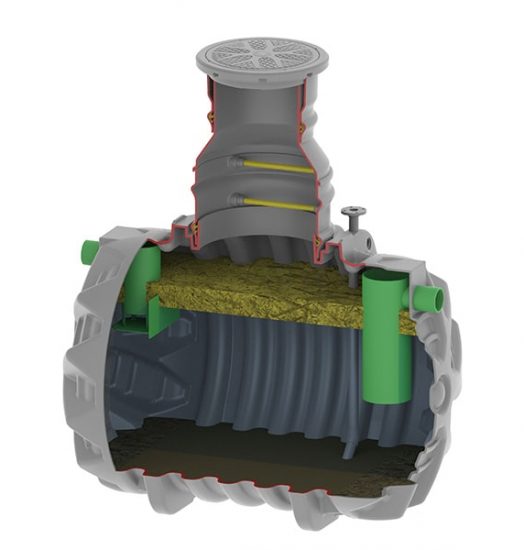Description
SEPTIC WITH INFILTRATION SYSTEM
What if there is no suitable stream nearby, or at least a ditch to discharge treated wastewater or rainwater? The solution to this problem is an infiltration tunnel. The system withstands loads up to 3.5 t / m² so that they can be installed under car parks or roads. One tunnel module replaces 800 kg of gravel or 36 meters of drainage pipes. No lifting equipment is required for installation. The required number of modules is simply connected in one or more rows, closing at both ends with endplates. The large volume of the tunnels reduces the number of earthworks, which saves cash!
Principle of operation of the local sewerage
Septic tank is especially suitable for objects where irregular sewage generation is expected (for example, summer houses). SNIGO SEP equipment consists of two components – the SNIGO tank and the infiltration tunnels into the ground. No electricity is required to operate the system. As the effluent flows into the septic tank, which is divided into two parts, the flow rate decreases and the effluent breaks down into fractions. Grease and other lighter-than-water components accumulate in the upper water layer, while heavier contaminants settle to the bottom. The treatment rate of effluent treated from the septic tank is about 70%. Further wastewater treatment takes place in special infiltration tunnels, where the treated wastewater is infiltrated into the soil through a layer of natural biofilter (crushed stone, gravel, sand), thus decomposing the remaining pollutants.
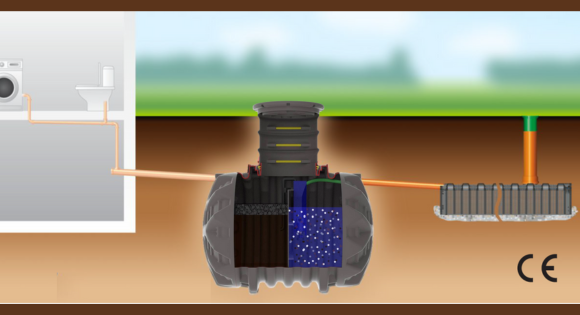

System installation features
It is recommended to connect the septic tank to the pipeline no further than 6 m from the buildings to maintain the optimum temperature in the sewage. The infiltration system can be installed in soil with a light mechanical structure and good water permeability. The distance from the infiltration field to the drinking water source must be at least 30 meters and the distance from the bottom of the filter layer to the groundwater surface must be at least 1 meter.
The septic tank SNIGO SEP has been tested and certified by a notified TÜV laboratory. Tests have confirmed its compliance with the standard EN 12566-1, therefore the product is marked with the CE mark.
Selection of the number of tunnels for wastewater
| Inhabitants | Well water-absorbing primer | Moderately water-absorbing primer |
|---|---|---|
| 2-4 | 4 | 6 |
| 6-8 | 8 | 12 |
| 9-12 | 12 | 18 |
| 12-16 | 16 | 24 |
Number of tunnels for rainwater
| Soil type | Roof area 100 sq.m. | Roof area 150 sq.m. | Roof area 200 sq.m. |
|---|---|---|---|
| Gravel | 3-5 | 4-7 | 5-8 |
| Sand | 6-7 | 8-11 | 10-14 |
| Fine sand | 8-10 | 12-15 | 15-20 |
| Loam | 10-13 | 15-19 | 19-25 |
Compact and inexpensive solution
The distance from buildings and leaky basements should be at least 6 m, burial depth from 50 to 200 cm. A 10 cm thick layer of gravel is spread on a horizontally leveled surface. The infiltration tunnel modules are interconnected in the longitudinal direction, covered with geotextile and covered with a layer of gravel. The inlet pipe is connected via the endplate, where the possible pipe diameters are marked (Ø100, Ø160, Ø200, Ø315 mm) and are introduced into the tunnel by about 200 mm.
Infiltration equipment set
- • Required number of tunnels;
- • 2 end plates per row of tunnels;
- • Control – ventilation hatch DN200;
- • Geotextiles.
